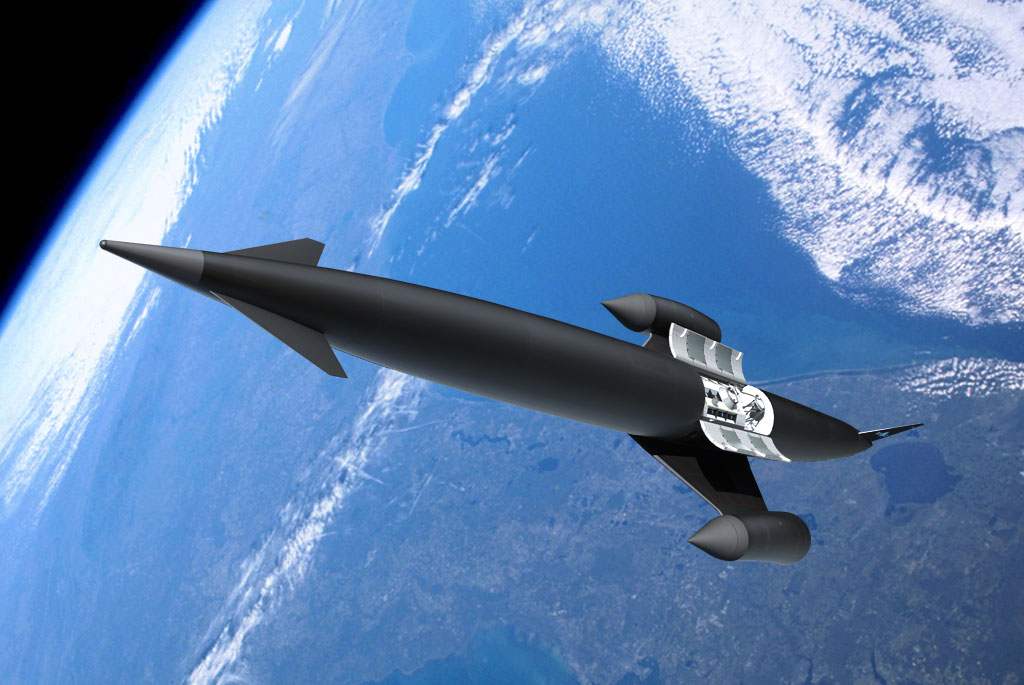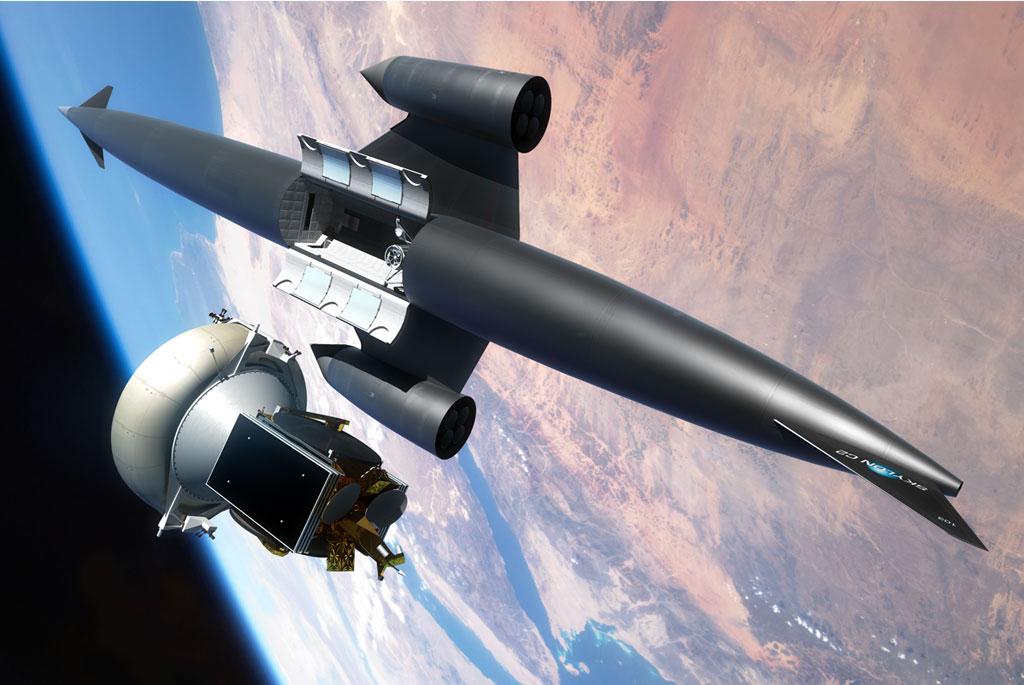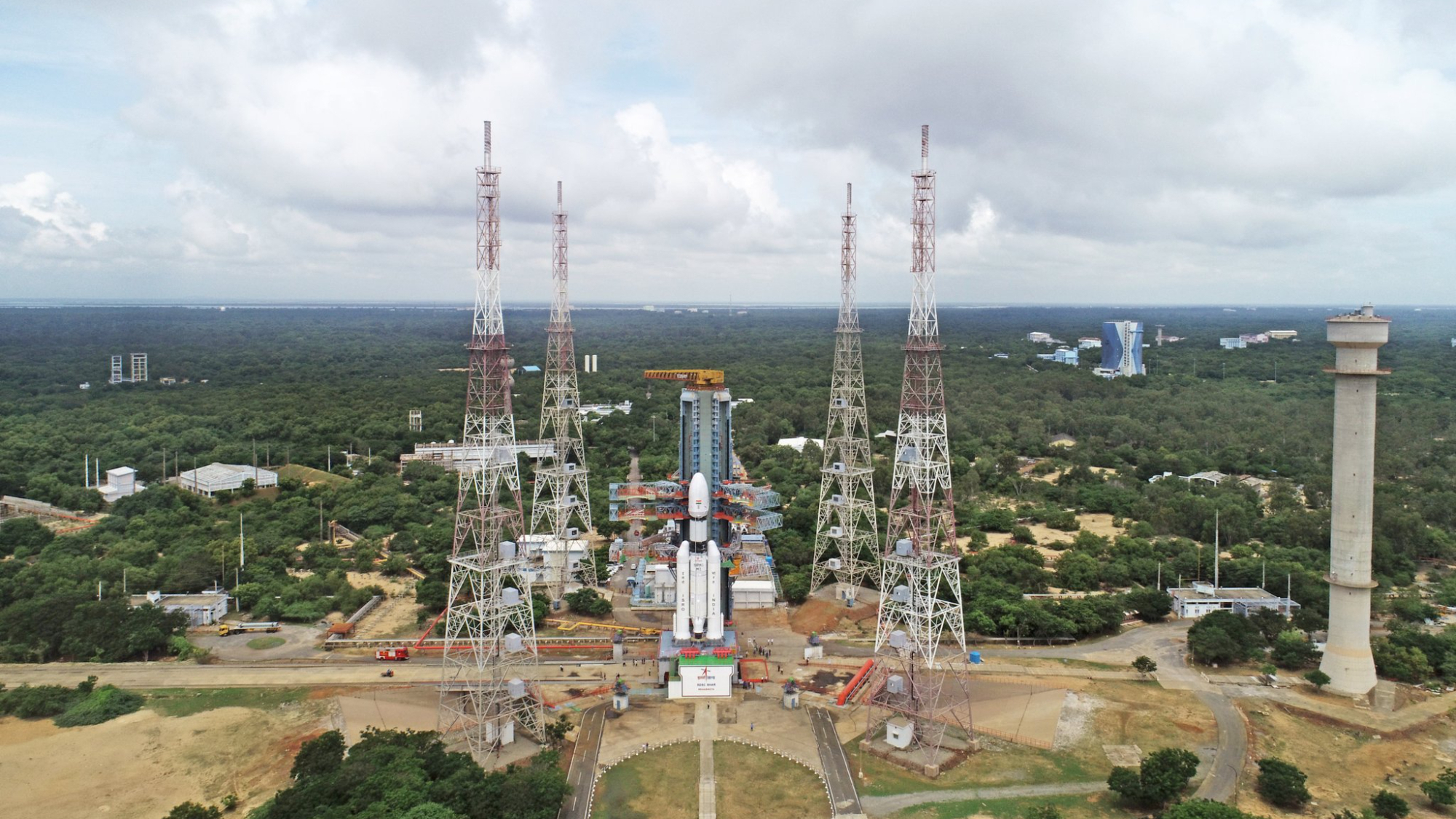Futuristic Space Plane Concept Moves Closer to Reality

A giant space plane that doubles as a supersonic jet is closer than ever to becoming a reality.
Skylon is a privately funded, single-stage-to-orbit vehicle designed to take off and land from a runway, delivering up to 33,000-pounds (15,000 kilograms) into orbit. That payload could be a satellite or crew module, its makers say. Under development by Abingdon, England-based aerospace company Reaction Engines Ltd., Skylon's progress has interested the European Space Agency, and the small U.K. firm has revealed to SPACE.com its latest progress.
"We are now planning the next phase of development and raising the financing for it," Mark Hempsell, the company's future programs director, told SPACE.com.
Progress on the Skylon space plane's heat shield, superstructure, aerodynamics, avionics and critical rocket engine technologies is expected to help the European Space Agency compare the unpiloted reusable spacecraft's business case with expendable launch vehicles next year. [Gallery: Concept Images of the Skylon Space Plane]
The next phase
Skylon is a space plane concept with a slender fuselage that has delta wings attached midway. On the wings' tips is the Synthetic Air Breathing Engine, or SABRE.
The "next phase" Hempsell refers to will involve building a SABRE engine and test-flying it. But building an engine will require a consortium, and Reaction Engines is now looking for partners. The firm has successfully tested a SABRE engine rocket nozzle, called Expansion/Deflection, to improve thrust, with the help of University of Bristol engineers. Its results have now been independently verified by the ESA.
Breaking space news, the latest updates on rocket launches, skywatching events and more!
Another key SABRE technology is the heat exchanger, which cools the incoming air to feed it to the engine that burns it with onboard hydrogen. In the thicker lower atmosphere the air entering the engine will be hotter than 1,830 degrees Fahrenheit (1,000 degrees Celsius). This air needs to be cooled or the engine overheats.
The air will be cooled to a cryogenic minus 238 degrees Fahrenheit (minus 150 degrees Celsius) in one one-hundredth of a second. However, once the space plane enters rocket mode above the useful atmosphere, the hydrogen will be burned with onboard liquid oxygen.
Future tests
Tested at Reaction Engine's B9 facility with a Viper jet engine from March to April this year, a flight-weight heat exchanger ran for the full ascent duration, six to eight minutes, cooling the viper's exhaust to around 14 degrees Fahrenheit (minus 10 degrees Celsius). The next tests, starting in August, will aim for the cryogenic temperatures.
For the exchanger work, the ESA and the U.K. government provided about 1 million Euros ($1.2 million) in 2009. Early work is also under way on the engine's circulators, to circulate the medium SABRE uses to transfer the incoming air's heat, which is helium.
As well as building the SABRE engine, the next phase will see the current Skylon design, called C1, progressed toward the D1 configuration. Flying the space plane in the atmosphere faster than five times the speed of sound requires good aerodynamics. The D1 design is expected to help solve outstanding issues such as how to trim Skylon in flight. Aircraft use trim, meaning flight control surface adjustment, to adapt to changes in aerodynamic lift that occur as the aircraft flies faster and higher. [Video: Skylon Space Plane Delivery]
To control this supersonic space plane in the atmosphere, Reaction Engine's avionics development has reached a stage where hardware standards are being identified. Strategies such as adopting military standards or converting qualified satellite or aviation hardware for the reusable space plane were all considered. But Spacewire, a European standard that originated at Scotland's University of Dundee, is now to be used for the Skylon flight computer databus.
Withstanding the heat
When re-entering, like the space shuttle, Skylon will experience extreme temperatures. However, its heat shield will not have to be developed from scratch; the material already exists. The heat-shield material is a fiber-reinforced ceramic that can withstand temperatures up to 2,060 degrees Fahrenheit (1,127 degrees Celsius). It has already been tested in a plasma chamber by Reaction Engines.
The challenge is that the company behind it is no longer in business. Reaction Engines plans to re-create the material, but also has the option of buying from a French company, which has a similar product.
Under the heat shield is the superstructure of the space plane, which is to be made of titanium-silicon struts. The technicalities of this alloy have been overcome and now the work is focusing on reducing the strut's manufacturing cost, officials say.
Titanium is known to be an expensive metal to process. Reaction Engines is also planning for a shaker table that would shake a scale-model of a portion of the superstructure and its struts, to demonstrate the vehicle can cope with the forces it will experience during the rapid ascent into orbit.
Making progress
Such progress is enough that Hempsell is expecting in a year's time "to give ESA Skylon as a comparable [vehicle], they will be able to do an apples-for-apples comparison, I hope," he said.
That apples-to-apples comparison with expendable launchers will be more than a technical comparison. On July 18, Reaction Engines had a meeting with the ESA's launcher directorate, which oversees European rocket development. Also present were the U.K. Space Agency and representatives from the ESA's European Space Research and Technology Centre.
"We showed them the [Skylon development] program," Hempsell said. "The launcher directorate was less concerned by the technical details, I think because ESTEC are already monitoring that. The launcher directorate felt they didn't need to do a technical job because ESTEC and Mark Ford's chemical propulsion department are already doing a technical job on us."
The launcher directorate's confidence in Skylon follows a technical assessment of the space plane by the agency that concluded in May 2011 that there were no issues that would prevent successful continued development of the space plane.
Instead, Hempsell explained, Reaction Engines' approach was "trying out a standard business model. We're treating them like our first customer, such as an airline's got a requirement, we might not have exactly what they have in mind, but we turn up with the product we've got." [Pictures: Breaking the Sound Barrier]
Business model
The business model for Skylon is a plan to offer the vehicle as a transportation system like a railway, a shipping company or an airline. Those are similarly large-scale investments in the million- and billion-dollar range, with a return that is spread over many years.
These various technical assessments and oversights led ESA Director-General Jean-Jacques Dordain to speak of his agency's increasing interest in Skylon and the planned July 18 meeting at an impromptu media briefing a week before, on July 10 at the Farnborough International Airshow in Hampshire, England. "I think there is a genuine interest there in terms of what we can do for [ESA]," Hempsell said. "We mostly concentrated on what Skylon would look like in a European context. How it would be marketed and funded."
Another reason for Dordain's interest in Reaction Engines is its application to the launcher directorate's New European Launch Service (NELS) program.
Unsuccessful in its initial bid, Reaction Engines will continue to inform the directorate of its progress while two companies, Germany's OHB System and EADS Astrium, maker of ESA's workhorse rocket, Ariane 5, have been funded with up to 2 million euros ($2.5 million) for the one-year NELS program.
In Hempsell's view, the launcher directorate was surprised that Reaction Engines met NELS technical requirements but without the directorate's assumed model about how the requirements would be met.
On the same day Dordain spoke of his agency's interest in Skylon, Reaction Engines announced at its air show exhibit that its March and April heat exchanger tests had been successful. The U.K. government space minister, David Willetts MP, was present and endorsed the space plane. "The technology has been appraised by ESA and our [UK] space agency, and their assessments have always been very positive," Willetts said. "I've been very impressed with the technical assessments so far."
Willetts added that his government was considering how it can support Reaction Engines further. This could include resolving regulatory issues, because there are no European rules about operating reusable space planes. The ESA's head of chemical propulsion, Mark Ford, was also present and said, "We've been impressed with what has happened so far. ESA expects a successful outcome by the end of the year. For the heat exchangers there are spinoffs for aviation and other industries."
Follow SPACE.com on Twitter @Spacedotcom. We're also on Facebook and Google+.
Join our Space Forums to keep talking space on the latest missions, night sky and more! And if you have a news tip, correction or comment, let us know at: community@space.com.
Rob Coppinger is a veteran aerospace writer whose work has appeared in Flight International, on the BBC, in The Engineer, Live Science, the Aviation Week Network and other publications. He has covered a wide range of subjects from aviation and aerospace technology to space exploration, information technology and engineering. In September 2021, Rob became the editor of SpaceFlight Magazine, a publication by the British Interplanetary Society. He is based in France. You can follow Rob's latest space project via Twitter.

